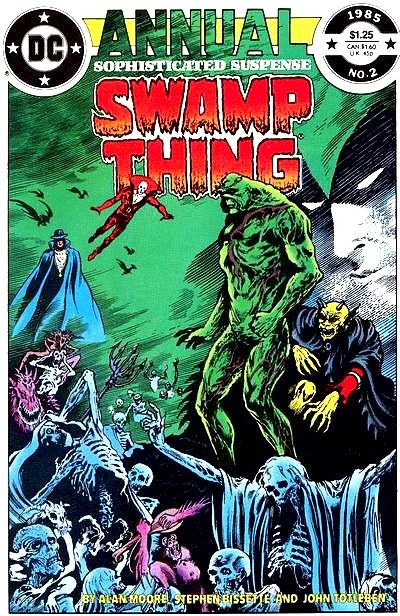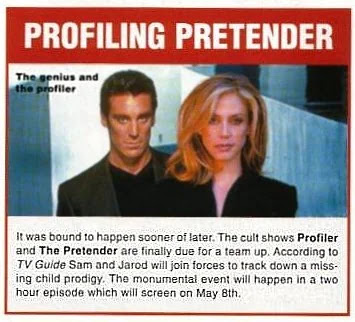In the prosaically titled story "The Spider Widow and the Raven" in FEATURE COMICS #60 (September 1942) the Spider Widow, who'd made her solo debut in FEATURE #57, began a series of informal team-ups with another hero, The Raven. The running joke was that they just kept tripping over one another by accident, rather than intentionally teaming up, like most partner-teams.
Frank Borth, who drew both this strip and PHANTOM LADY in POLICE COMICS, then experimented for three months crossing over the features. First, The Raven pops up in POLICE COMICS #20, as he and Phantom Lady work together.
Then, in FEATURE COMICS #69, The Raven decides to team up with Phantom Lady to continue investigating the crime-scheme begun (as he himself says) in POLICE COMICS. For the sake of the joke, Borth conveniently forgets that up until this point, Raven and Spider Widow DON'T know one another's secret identities, but they act as if they've known each other for some time . Spider Widow and Phantom Lady immediately rub each other the wrong way-- probably because Phantom Lady really does have a yen for the Widow's sort-of boyfriend. Thus it's not much of a team-up, and the high point might be Raven "quoting" the slogan of the Blackhawks.
In POLICE COMICS 21, the crooks being pursued by the trio have noticed the contentiousness between the two heroines, and they write a couple of letters, making each heroine think that the other one has challenged her to a sword-duel. Despite the fact that the letters mentioned the heroines only by their hero-names, Phantom Lady comes in costume but Spider Widow leaves behind her trademark witch-mask. Nevertheless, the watching hoods somehow figure out the mundane identities of both crimefighters. Usually this means that the crooks are doomed to get killed before they reveal all, but at the end of the story the malcontents are simply taken to jail.
FEATURE COMICS #70 implies the consequences of this omission. for more crooks, probably allies of those imprisoned, track Spider Widow down to her home and abduct her, with the unnecessary excuse that they're going to take her to their other captive, The Raven. The Widow manages to let Phantom Lady listen in on the conversation, so the latter heroine goes to aid her buddies. Strangely, even though it's the Spider Widow's feature, she never assumes her costume or uses her spiders, and Phantom Lady gets the best action.
Then POLICE COMICS 22 contributes a chapter that does involve the ongoing crimes involving Phantom Lady's father, so technically this is part of the narrative, even though Raven and Spider Widow make no more than a cameo.
Then for FEATURE #71 we're back to a full-fledged team-up, with a splash showing a memorable double-drubbing of one beast by both beauties. The main story has Raven planning to lock up the quarrelsome ladies in a room so they'll resolve their differences, but the plot backfires, so that the Widow has to save both Raven and Phantom Lady from a watery demise.
That sixth adventure is the last installment, but for whatever internal reasons, the next two adventures for Spider Widow and Phantom Lady were their last appearances at Quality Comics, although the company Fox bought the rights to Phantom Lady and continued her adventures with a greater emphasis on salacious visuals.









































